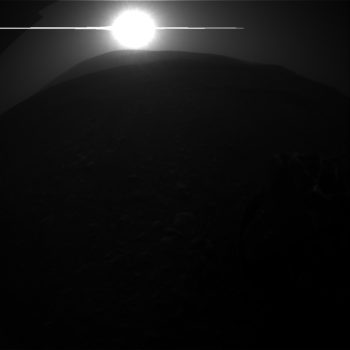NASA’s Curiosity Mars rover is now in Sol 2213 and its eyes are on the sky reports Lauren Edgar, a planetary geologist at the USGS in Flagstaff, Arizona.
A three-sol script has the robot focusing on environmental monitoring, as the robot continues to be on the mend following a memory glitch that’s impacted transmission of imagery and data.
Dust content
“The first sol kicks off with Mastcam tau, Navcam line of sight, and Navcam dust devil observations, to monitor the dust content in the atmosphere and search for dust devils,” Edgar says.
Then the rover’s Chemistry & Mineralogy X-Ray Diffraction/X-Ray Fluorescence Instrument (CheMin) will return the remaining raw data frames from the “Stoer” analysis from early September.
In the afternoon, Curiosity will acquire a Mastcam sky survey, Navcam zenith movie, and Navcam suprahorizon movie, which will provide additional atmospheric monitoring data.
Pre-anomaly imaging
“Similar environmental observations will be acquired early the next morning, with an additional Mastcam crater rim extinction observation,” Edgar points out. “The second sol also includes a redo of the pre-anomaly post-drive imaging, to look for changes and provide a terrain mesh prior to resuming full arm and mobility activities.”
The third sol planned includes a final suite of Mastcam tau, Navcam dust devil and Navcam suprahorizon movies, in addition to the standard Rover Environmental Monitoring Station (REMS) and Dynamic Albedo of Neutrons (DAN) passive observations throughout the plan.
“But while the environmental theme group has their eyes on the sky, I’ve got mine on the ground…looking south over the back of the rover, and the new terrain that we are tantalizingly close to reaching,” Edgar concludes. “Looking forward to resuming full science operations soon!”






